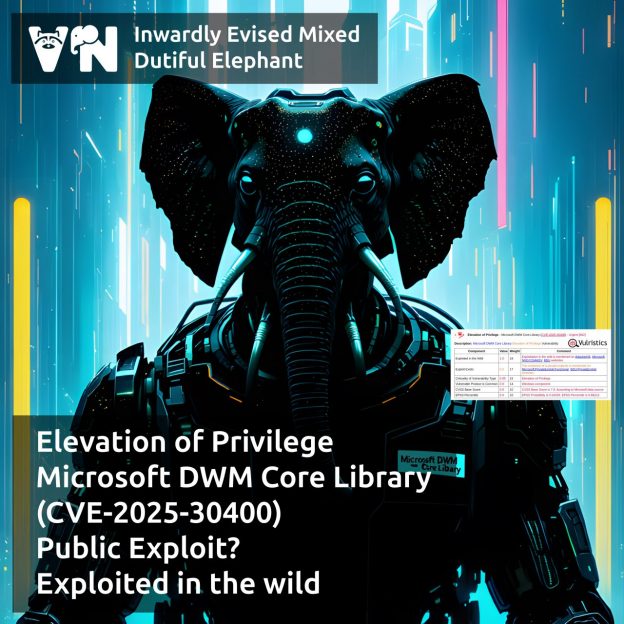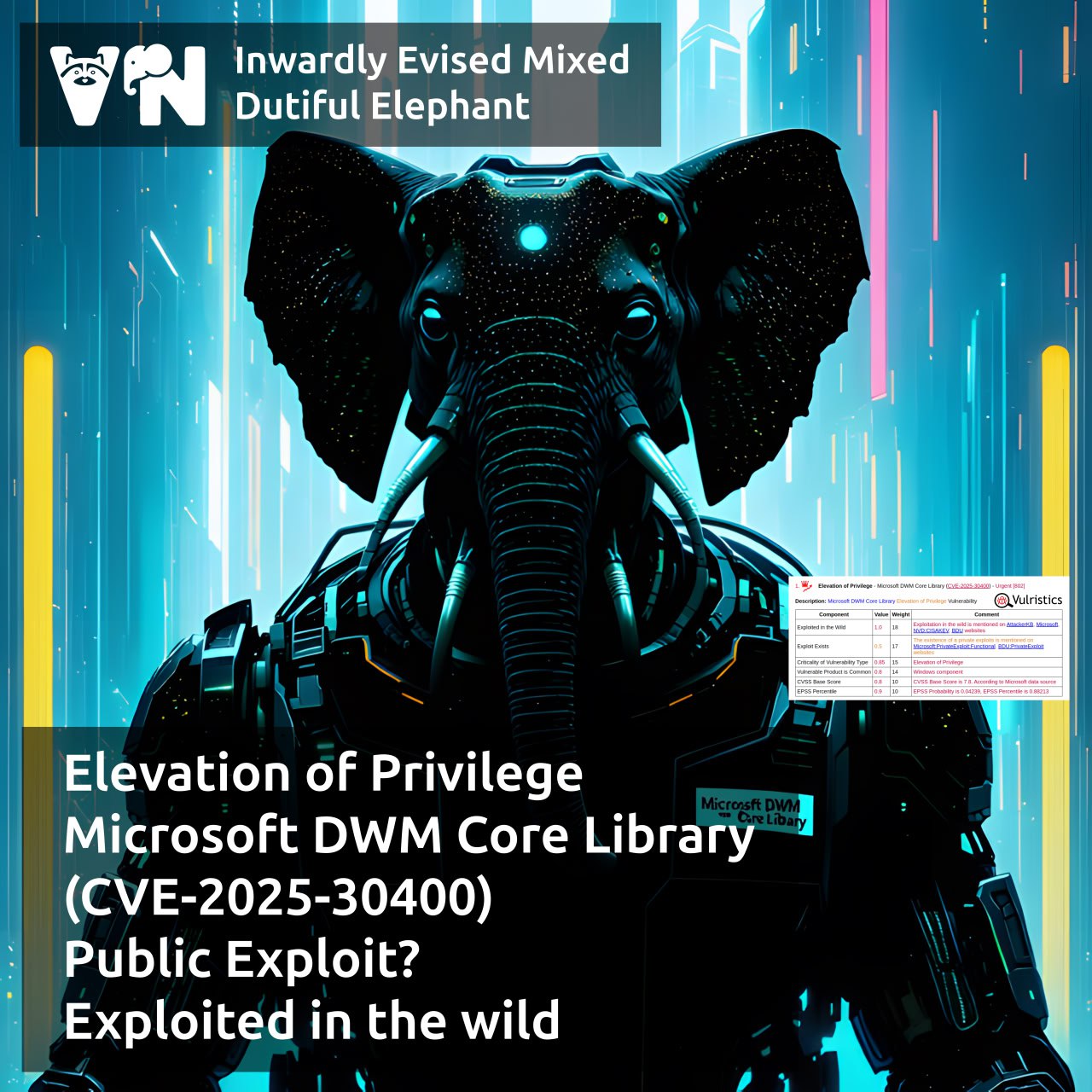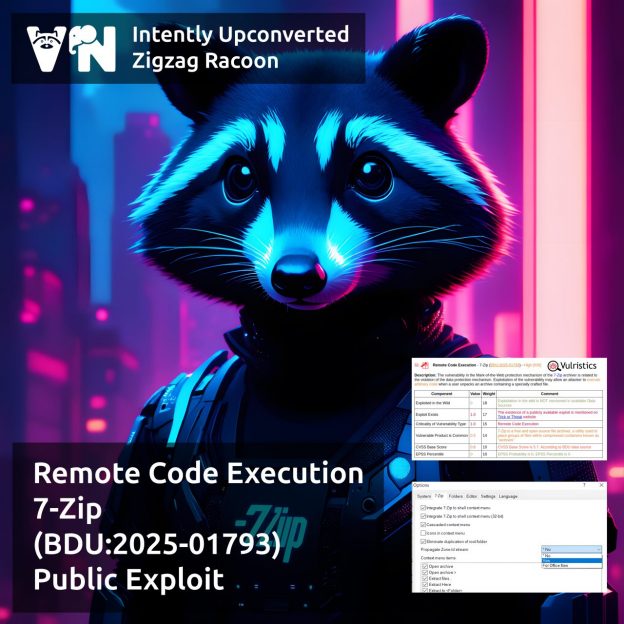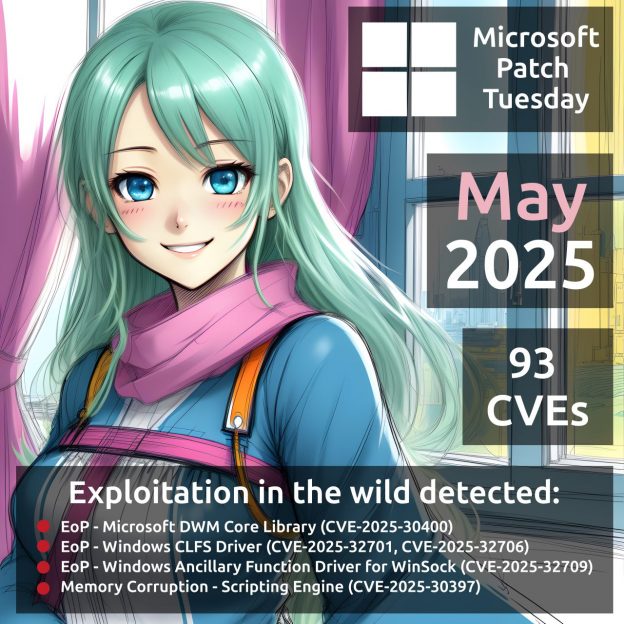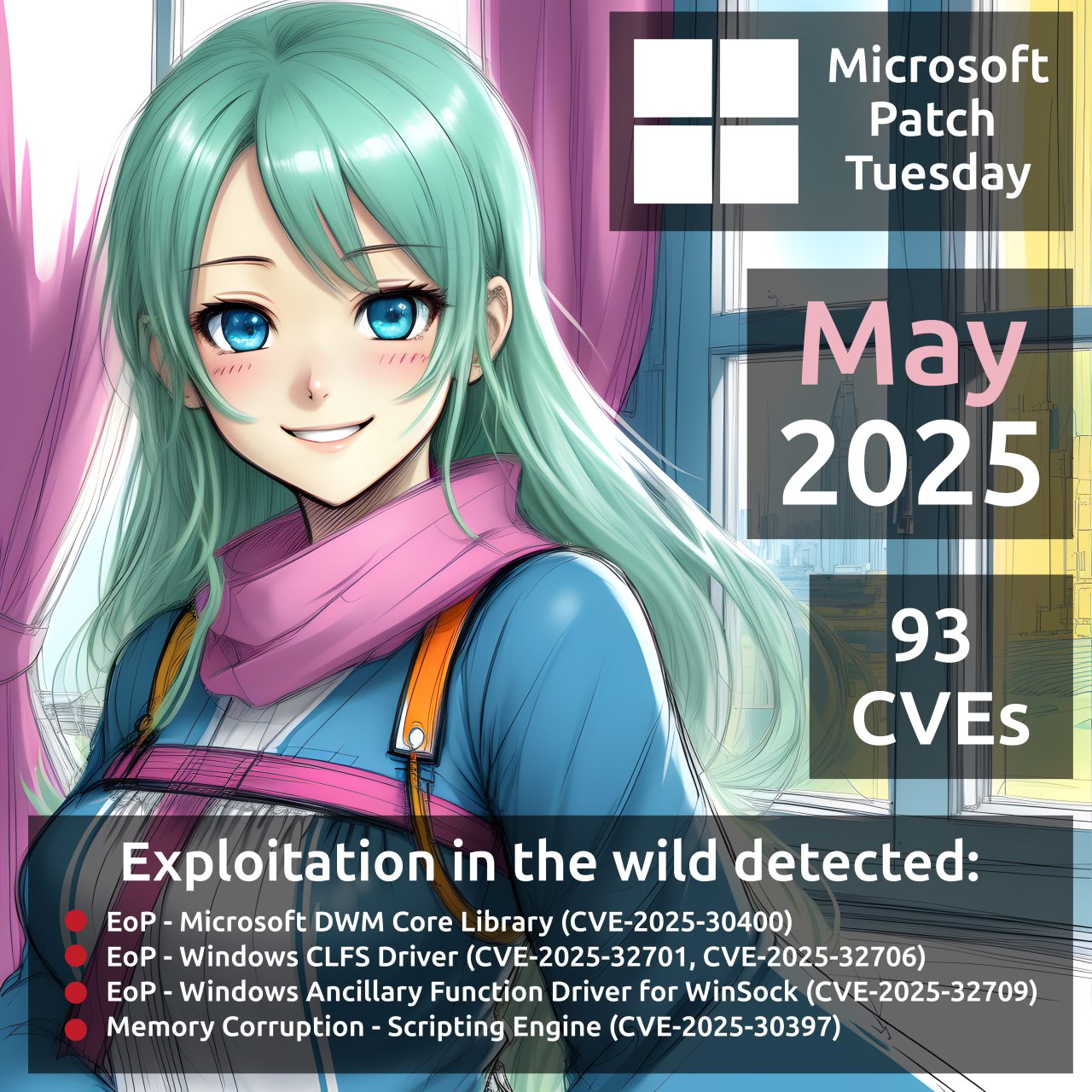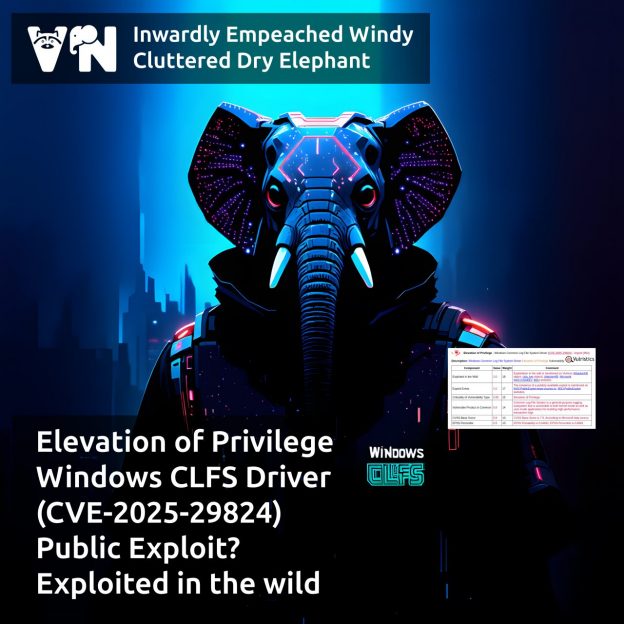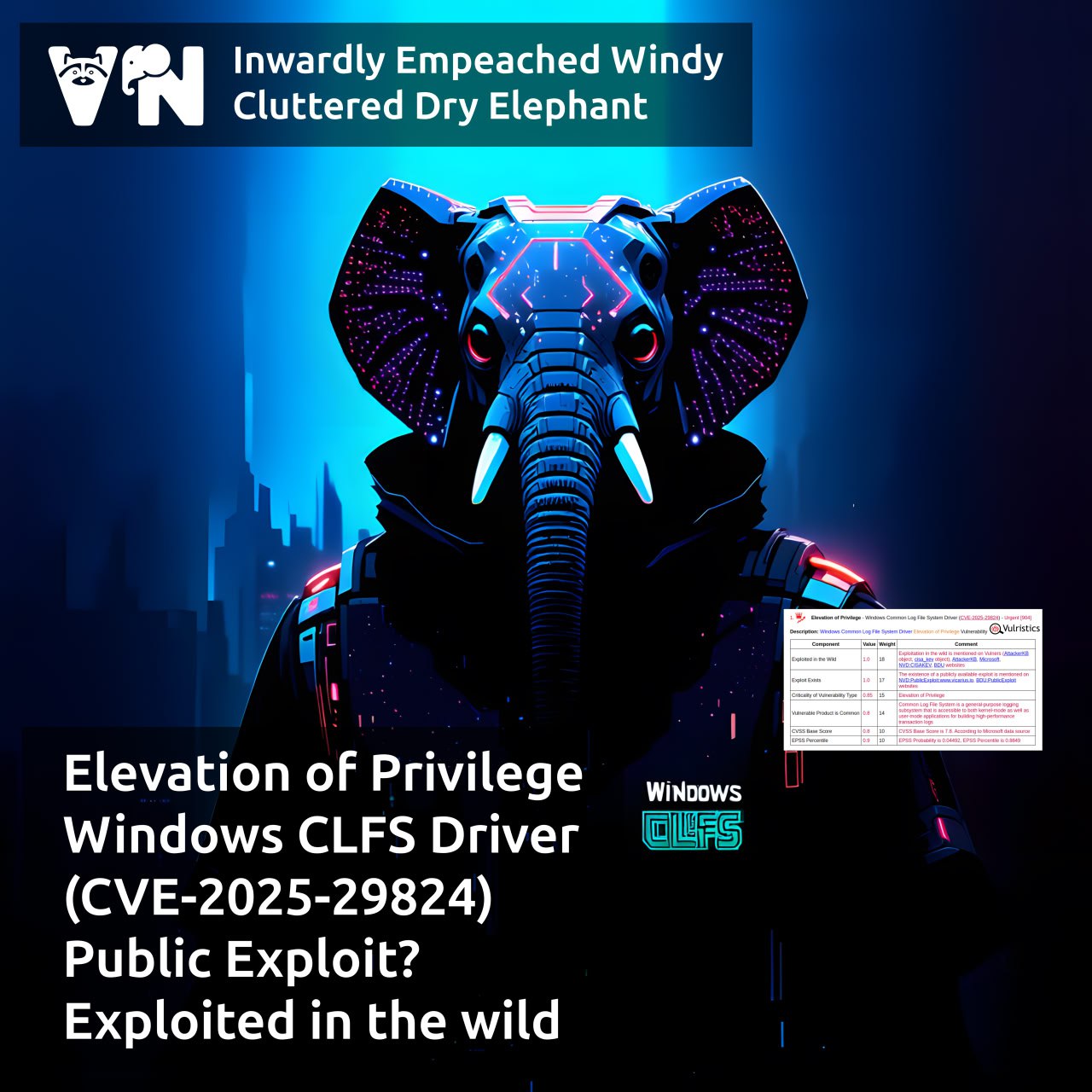
June Microsoft Patch Tuesday. A total of 81 vulnerabilities, roughly the same as in May. Among them, 15 vulnerabilities were added between the May and June MSPT. There are 3 vulnerabilities with signs of exploitation in the wild:
🔻 RCE – WEBDAV/Internet Shortcut Files (CVE-2025-33053). For successful exploitation, the victim must click on a malicious .url file.
🔻 SFB – Chromium (CVE-2025-4664)
🔻 Memory Corruption – Chromium (CVE-2025-5419)
There’s a PoC for one of the vulnerabilities on GitHub, but I doubt it actually works:
🔸 EoP – Microsoft Edge (CVE-2025-47181)
Other notable ones include:
🔹 RCE – Microsoft Office (CVE-2025-47162, CVE-2025-47164, CVE-2025-47167, CVE-2025-47953), KPSSVC (CVE-2025-33071), SharePoint (CVE-2025-47172), Outlook (CVE-2025-47171)
🔹 EoP – SMB Client (CVE-2025-33073), CLFS (CVE-2025-32713), Netlogon (CVE-2025-33070)




